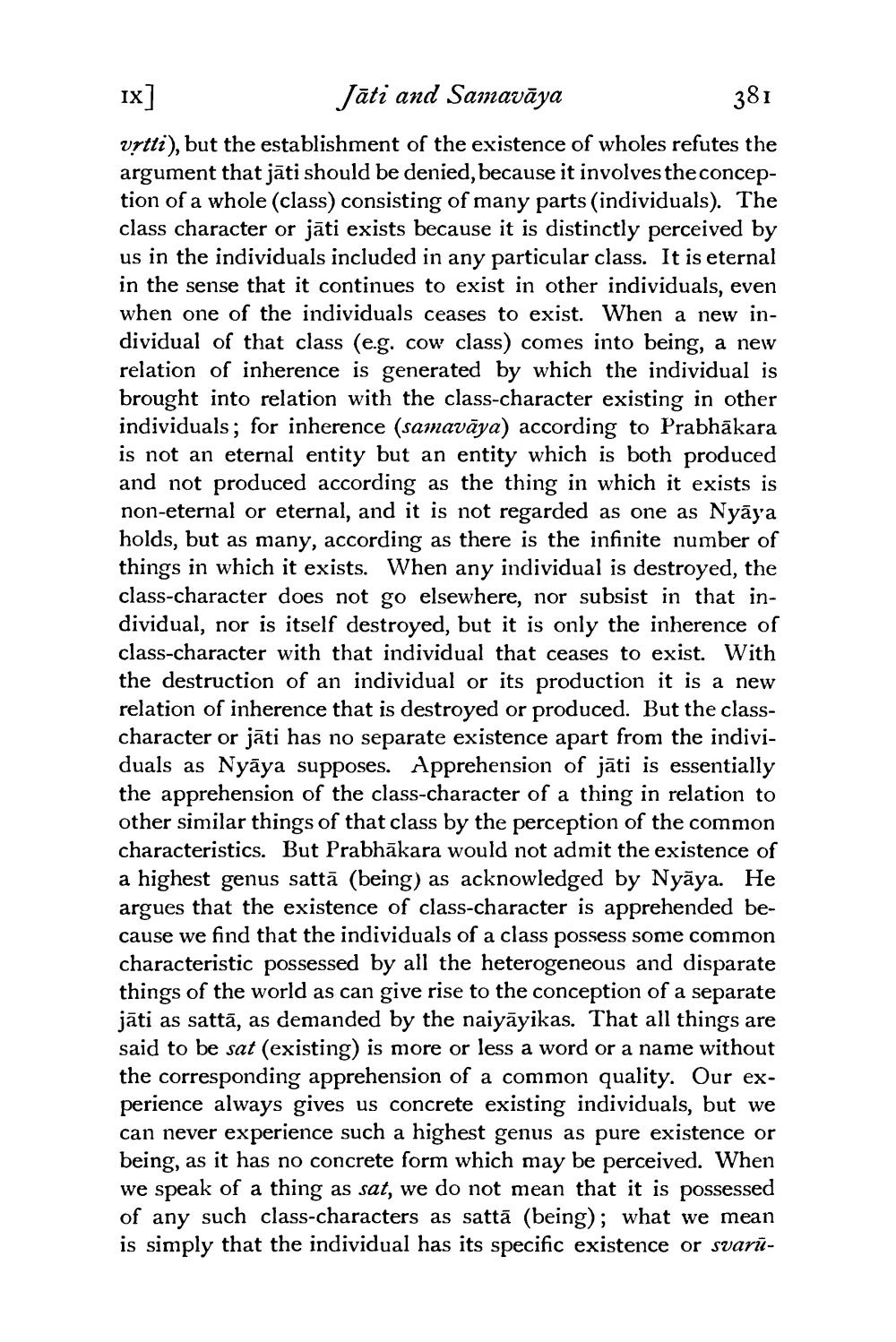________________
IX]
Jāti and Samavāya
381
vrtti), but the establishment of the existence of wholes refutes the argument that jāti should be denied, because it involves the conception of a whole (class) consisting of many parts (individuals). The class character or jāti exists because it is distinctly perceived by us in the individuals included in any particular class. It is eternal in the sense that it continues to exist in other individuals, even when one of the individuals ceases to exist. When a new individual of that class (e.g. cow class) comes into being, a new relation of inherence is generated by which the individual is brought into relation with the class-character existing in other individuals; for inherence (samavāya) according to Prabhākara is not an eternal entity but an entity which is both produced and not produced according as the thing in which it exists is non-eternal or eternal, and it is not regarded as one as Nyāya holds, but as many, according as there is the infinite number of things in which it exists. When any individual is destroyed, the class-character does not go elsewhere, nor subsist in that individual, nor is itself destroyed, but it is only the inherence of class-character with that individual that ceases to exist. With the destruction of an individual or its production it is a new relation of inherence that is destroyed or produced. But the classcharacter or jāti has no separate existence apart from the individuals as Nyāya supposes. Apprehension of jāti is essentially the apprehension of the class-character of a thing in relation to other similar things of that class by the perception of the common characteristics. But Prabhākara would not admit the existence of a highest genus sattā (being) as acknowledged by Nyāya. He argues that the existence of class-character is apprehended because we find that the individuals of a class possess some common characteristic possessed by all the heterogeneous and disparate things of the world as can give rise to the conception of a separate jāti as sattā, as demanded by the naiyāyikas. That all things are said to be sat (existing) is more or less a word or a name without the corresponding apprehension of a common quality. Our experience always gives us concrete existing individuals, but we can never experience such a highest genus as pure existence or being, as it has no concrete form which may be perceived. When we speak of a thing as sat, we do not mean that it is possessed of any such class-characters as sattā (being); what we mean is simply that the individual has its specific existence or svarü




